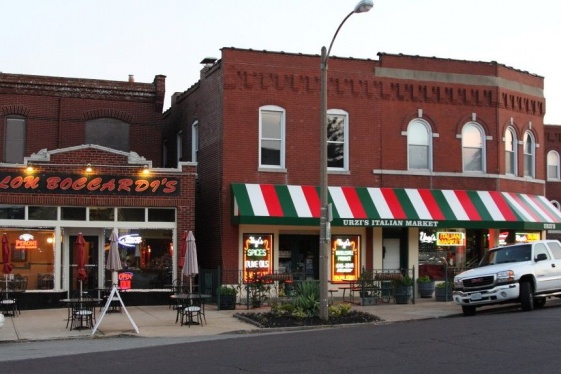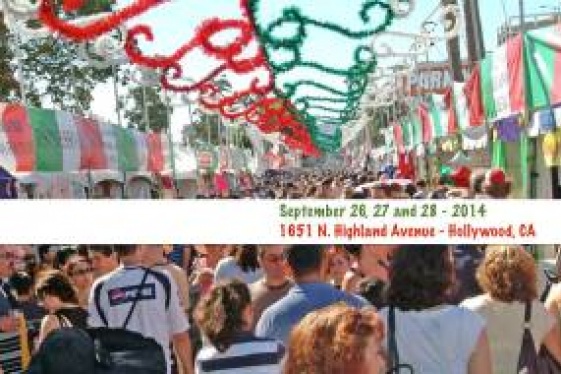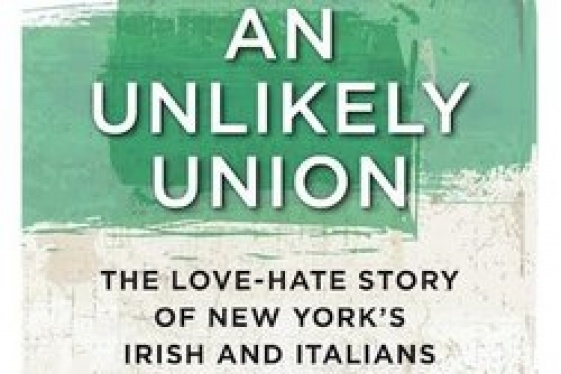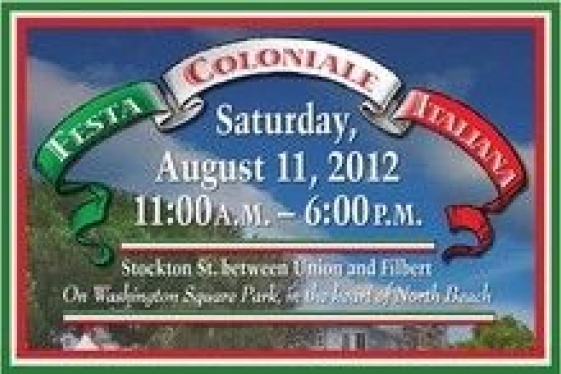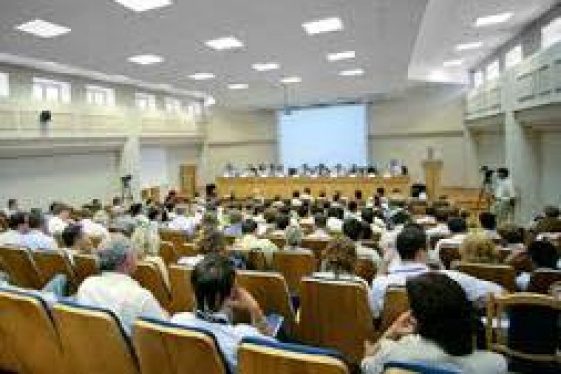
A people's dream: the building of their own community church, the holy family church

by Cookie Curci
During the great influx of Europeans to America, thousands of Italian immigrants came to the Santa Clara Valley. Word of California's fertile orchard lands had beckoned them to leave their impoverished towns and regions of Italy and travel to the "Golden State". They had heard tales that the streets of California were paved with gold. But when they got here they soon discovered three things: first, the streets were not paved in gold, second, they weren't paved at all, and third, they were expected to pave them!
The young Italian immigrates came by the thousands, settling into neighborhoods in what was then San Jose's West side. Others located in Almaden and other orchard lands of the Valley. In July of 1904, the conscientious immigrants began working together with one goal in mind: to construct a lavish church that would embody the spirit of their newly established Italian community. It would be a church that represented century old traditions and beliefs, It would exemplify hope and prosperity.
The church would be constructed by architect Alberto Porta. It would be located in the heart of the community at River and San Fernando Streets. Its design would be a small duplicate of the great St. Peter's Cathedral in Rome. The donations for this monumental task came form the valley's prune orchards, fields, and the emerging fruit industry.
My Grandparents, Maria and Antonio Curci, like their fellow immigrants, worked long hard hours in the orchards and canneries of the valley, contributing much of their time and earnings toward the completion of this grand project. Their dream for a community church was realized on October 6th, 1905. Heavy contributors to the church included the Christian Mothers, Holy Name Society, Italian Catholic Federation, and the Holy Family sisters. Grandma Maria and Grandpa Antonio were among the many young couples to marry in the Holy Family church.
The day of her wedding, Grandma Maria's heart beat fast with excitement as the moment of the ceremony drew near. As a devout young catholic, she had taken communion earlier that day at the rail of the Holy Family Church. Her impeccable spirit, now as pure and white as the bibbed collars worn by the parish nun's.
The year was 1910; the spectacular church was filled to capacity with community well-wishers who had come to bestow their blessings upon the handsome young couple. Friends and onlookers crowded the church steps standing three-deep in doorways to witness the holy sacrament.
A wedding among the young immigrant community was a welcomed celebration. The event represented a continuity of their people.
Adhering to their sacred beliefs and family traditions, Maria and Antonio recited their marriage vows in the sanctity of the Holy Family church. And there, for the next 60 years, their descendants would also attend Sunday mass and receive the holy Sacraments.
During the early years of their marriage, Grandpa Antonio went to work laying track for the city railroad lines. Work was scarce, and, like many immigrant workers, he was fearful of loosing his job; refusing to miss
a day's work even though he was suffering from influenza. His condition worsened and he developed double pneumonia. At the tender age of 32,
just 6 years after his wedding day, Grandpa Antonio passed away leaving Grandma Maria a widow with three children.
Grandma experienced her greatest comfort at the prayer rail of the Holy Family church. Unable to find work, her children sick with influenza and the bank about to foreclose on her home, she found courage and inspiration while praying in to her patron Saint Mary.
With a prayer in her heart, and her rosary beads in her hand, she attempted one last time to find work on the cannery lines.
That morning, through coincidence or divine intervention, a new foreman was on the job. He felt compassion for grandma Maria's plight, and gave her a spot on his cannery line. After a few years on the job, a romance blossomed between Grandma and the cannery foreman, Tony Dinapoli. He was a widower with six children who greatly admired Grandma's dedication to her family. They were married in the Holy Family Church and together raised a total of 12 children.
Once, I asked Grandma why it was so important to her people that they construct such a lavish cathedral when many of them barely had enough food to eat. Grandma answered with an old Italian saying. Translated it means: "Out of our habits grow our character, on our character we build our destiny".
The church had come to represent the spirit and character of these hardworking young immigrants, who they were, and what they would become. It stood, for many years as a tribute to the good habits and fine character of a tenacious people.
Arch Bishop Montgomery was applauded the day he laid the corner stone for the church in 1905. But, what the great San Francisco earthquake couldn't do in 1906, city planners did in 1969 when the church was raised by bulldozers to make way for the new Guadalupe Expressway.
The county developers offered $392.000 to acquire the church for the road project, but the supreme court jury set the price at $603.392. Perhaps, like most local residents, the jury remembered the abiding history attached to the unique cathedral .
The churches original artifacts were put up for auction in 1969, goods that included a grotto statue of St. Francis Cabrini, the first Italian American Saint; an ancient "kilgen" pipe organ, a marble baptism font, the main alter including the crucifix , a marble communion rail and alter and The old church bell which summoned legions of Italian and later Mexican Americans to mass.
Statues of our lady of Lourds, Our lady of Mt. Carmel and other virtually irreplaceable works of art were put on the block, many that were donated in return for divine favors. Bidding the hardest, for these items, was the church's pastor, Father Deluci, who managed to save many of the stained glass windows and artifacts, including the bell, for the Holy Family church's new location.
But lost forever was the dazzling gold leaf and muraled art work of the churchs intereor, exicuted by the Italian artist Roberto Lupetti. Nothing that compares with it could be done today. "DOMUS MEA DOMUS ORATIONIS VOCABITUR CUCTIS POPULIS" read the inscription over the ceiling and soaring sky dome of the church. Translation: "My house shall be called the house of prayer for all the people".
In 1969, when father Herold De Lucci conducted the final mass at the doomed church, there were many tears. Grandma Maria wept too, as she recalled the celebration of her wedding to her beloved Antonio, the family milestones celebrated there; her children and grand children baptized in ancient rite at the baptismal font (myself among them); the tragic loss of her young husband and how the church had been her strength and comfort.
She remembered the years during World War II and how she spent long hours at the church rail praying for the safe return of her five young sons who were fighting overseas. She remembered, too, how her prayers were all
answered and each of her boys returned safely home.
In gratitude, for the divine favor, grandma set aside a small amount from her meager earnings to donate a glorious stained glass window to the church. Today, the window, depicting the blessed Mother and child, stands in the new church as a symbol of a people's great love and faith .
The young immigrants worked together helping one another to succeed.
"We were like letters of the alphabet," Grandpa would say of their friends and family, "Separately we had no meaning, but together we were part of a great meaning."
Like its namesake, the new Holy Family Church, located on Pearl Avenue, arose like a phoenix out of an orchard of prune trees. The original bell, that rang for so many years from the old church belfry, is now preserved in a revered spot at the new location. The new Holy Family Church may not be as ostentatious as its name sake, nor as lavish with artifacts as the original , but its spiritual foundation remains equally as strong.
You may be interested
-
“The Art of Bulgari: La Dolce Vita & Beyond,...
by Matthew Breen Fashion fans will be in for a treat this fall when the Fine Arts Museums...
-
“The Hill” St. Louis’ Little Italy
When the fire hydrants begin to look like Italian flags with green, red and white stripes,...
-
13th Annual Galbani Italian Feast of San Gen...
In September of 2002, some of Los Angeles' most prominent Italian American citizens got to...
-
1st Annual Little Italy Cannoli Tournament
Little Italy San Jose will be hosting a single elimination Cannoli tournament to coincide...
-
An Unlikely Union: The love-hate story of Ne...
Award-winning author and Brooklynite Paul Moses is back with a historic yet dazzling sto...
-
Candice Guardino Brings GILDA AND MARGARETTE...
Candice Guardino is adding to her list of successful theatrical productions with the debut...
-
Festa Coloniale Italiana 2012
We are very excited to announce that on Saturday, August 11, The San Francisco Italian Ath...
-
ISSNAF medical imaging science chapter meeti...
AGENDA 12.00 – 12.15 Light lunch12.15 – 12.30Welcome addresses Lorenzo Mannelli, MD, PhD...




